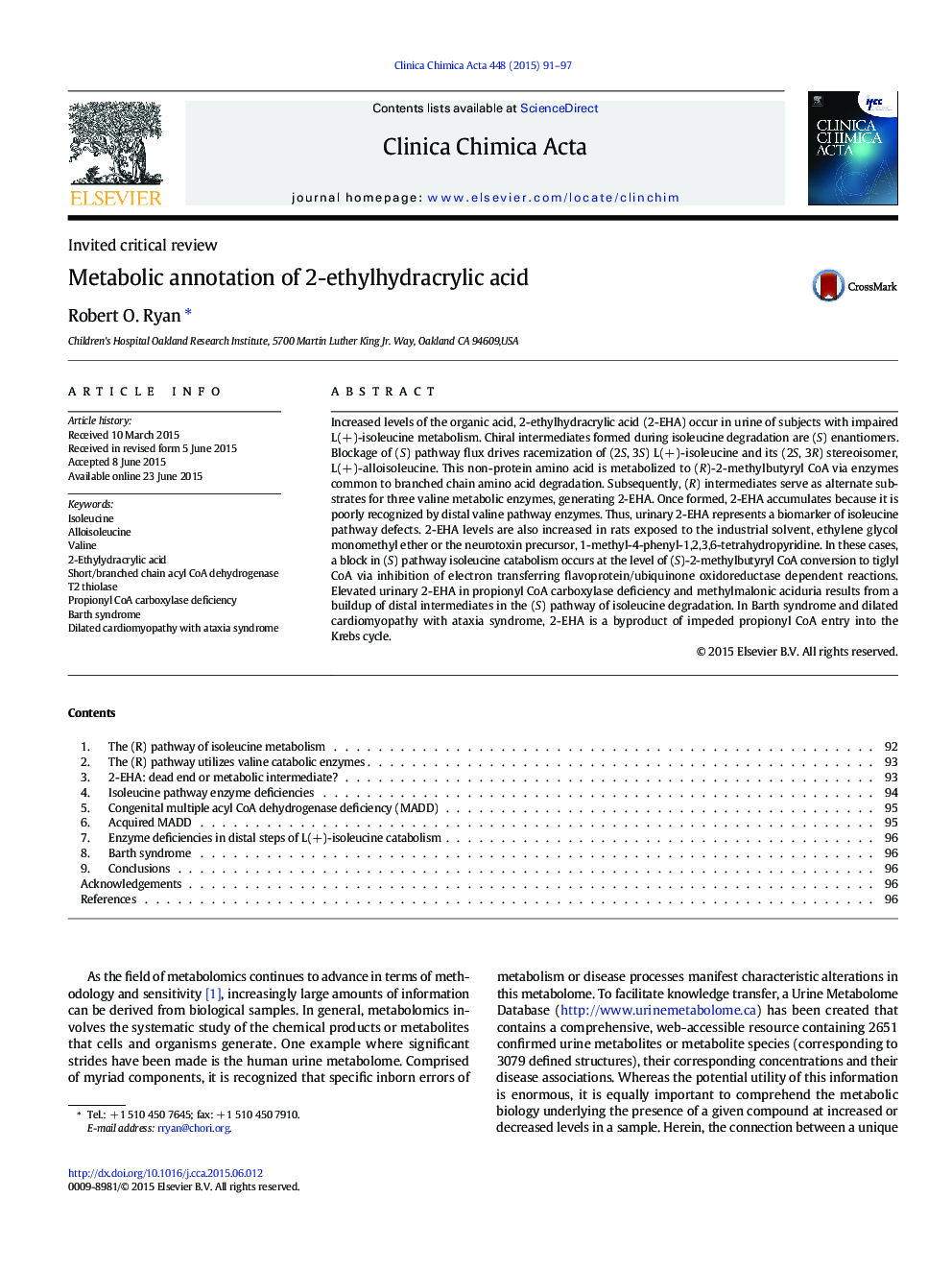| کد مقاله | کد نشریه | سال انتشار | مقاله انگلیسی | نسخه تمام متن |
|---|---|---|---|---|
| 8310571 | 1538650 | 2015 | 7 صفحه PDF | دانلود رایگان |
عنوان انگلیسی مقاله ISI
Metabolic annotation of 2-ethylhydracrylic acid
ترجمه فارسی عنوان
حاشیه نویسی متابولیک 2-اتیل هیدروکرریک اسید
دانلود مقاله + سفارش ترجمه
دانلود مقاله ISI انگلیسی
رایگان برای ایرانیان
موضوعات مرتبط
علوم زیستی و بیوفناوری
بیوشیمی، ژنتیک و زیست شناسی مولکولی
زیست شیمی
چکیده انگلیسی
Increased levels of the organic acid, 2-ethylhydracrylic acid (2-EHA) occur in urine of subjects with impaired L(+)-isoleucine metabolism. Chiral intermediates formed during isoleucine degradation are (S) enantiomers. Blockage of (S) pathway flux drives racemization of (2S, 3S) L(+)-isoleucine and its (2S, 3R) stereoisomer, L(+)-alloisoleucine. This non-protein amino acid is metabolized to (R)-2-methylbutyryl CoA via enzymes common to branched chain amino acid degradation. Subsequently, (R) intermediates serve as alternate substrates for three valine metabolic enzymes, generating 2-EHA. Once formed, 2-EHA accumulates because it is poorly recognized by distal valine pathway enzymes. Thus, urinary 2-EHA represents a biomarker of isoleucine pathway defects. 2-EHA levels are also increased in rats exposed to the industrial solvent, ethylene glycol monomethyl ether or the neurotoxin precursor, 1-methyl-4-phenyl-1,2,3,6-tetrahydropyridine. In these cases, a block in (S) pathway isoleucine catabolism occurs at the level of (S)-2-methylbutyryl CoA conversion to tiglyl CoA via inhibition of electron transferring flavoprotein/ubiquinone oxidoreductase dependent reactions. Elevated urinary 2-EHA in propionyl CoA carboxylase deficiency and methylmalonic aciduria results from a buildup of distal intermediates in the (S) pathway of isoleucine degradation. In Barth syndrome and dilated cardiomyopathy with ataxia syndrome, 2-EHA is a byproduct of impeded propionyl CoA entry into the Krebs cycle.
ناشر
Database: Elsevier - ScienceDirect (ساینس دایرکت)
Journal: Clinica Chimica Acta - Volume 448, 25 August 2015, Pages 91-97
Journal: Clinica Chimica Acta - Volume 448, 25 August 2015, Pages 91-97
نویسندگان
Robert O. Ryan,
